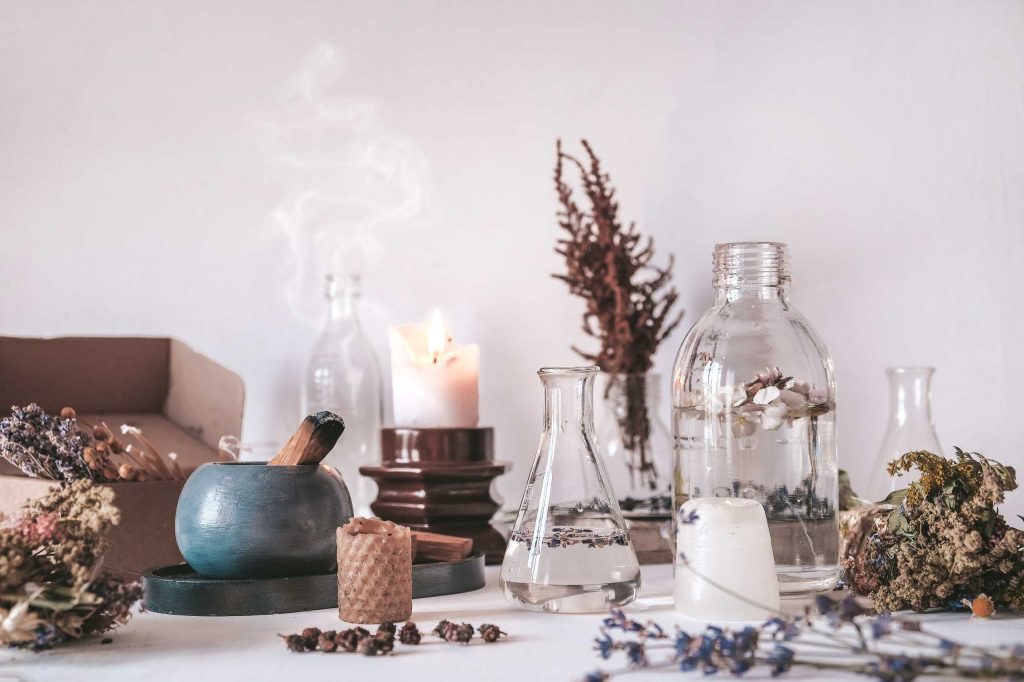Fragrance is more than just a pleasant smell — it’s a powerful language that communicates emotions, memories, and moods. At Candle & Aroma Lab, mastering the art of fragrance blending is at the heart of creating truly captivating candles and aromas. In this article, we’ll guide you through the fascinating world of scent composition and how you can develop your own signature blends.
The Basics of Fragrance Notes
Every fragrance is composed of multiple layers called notes, which unfold over time to create a complex sensory experience. Understanding these layers is the first step in blending.
- Top Notes: The first impression — light, fresh, and fleeting. Examples include citrus, peppermint, and eucalyptus. They evaporate quickly but set the initial mood.
- Middle (Heart) Notes: The body of the scent — rich, balanced, and lasting longer. Common heart notes are lavender, rose, and cinnamon. They bridge the top and base notes.
- Base Notes: The foundation — deep, warm, and long-lasting. Think sandalwood, vanilla, musk, and amber. Base notes anchor the fragrance and provide lasting depth.
How to Blend Like a Pro
Blending scents is both an art and a science. Here are some principles to guide your creative process:
- Balance Your Notes: A well-rounded fragrance usually has a ratio of roughly 30% top notes, 50% middle notes, and 20% base notes, but experimentation is key.
- Think in Themes: Create blends that tell a story — a fresh morning walk, a cozy winter evening, or a tropical escape. Use notes that evoke these moods.
- Start Small: Mix tiny batches first to test combinations before scaling up. This saves materials and allows refinement.
- Keep a Scent Journal: Record your blends, proportions, and impressions to track what works and what doesn’t.
Choosing Ingredients: Essential Oils vs. Fragrance Oils
- Essential Oils: Natural extracts from plants offering therapeutic properties and authentic scents. They are generally more subtle and require careful blending.
- Fragrance Oils: Synthetic or blended oils designed to mimic or enhance natural scents, often stronger and more varied in options.
Both have their place in candle and aroma making, and learning how to combine them opens endless possibilities.
Creating Mood with Fragrance
Your blend can influence the atmosphere of any space or moment. Here are some popular scent profiles and their emotional effects:
- Relaxing & Calming: Lavender, chamomile, vanilla. Ideal for bedrooms and meditation areas.
- Energizing & Uplifting: Citrus, peppermint, rosemary. Great for workspaces and kitchens.
- Warm & Cozy: Cinnamon, clove, sandalwood. Perfect for living rooms and autumn vibes.
- Fresh & Clean: Eucalyptus, tea tree, mint. Excellent for bathrooms and entryways.
Experimenting Beyond Candles
Fragrance blending isn’t limited to candles — explore making room sprays, diffusers, bath salts, and personal perfumes. This versatility lets you extend your creativity and craft a fully scented environment.
Final Tip: Trust Your Nose
While there are guidelines, scent blending is deeply personal. Trust your instincts, enjoy the process, and don’t be afraid to try unexpected combinations. Your unique nose is your greatest asset in crafting aromas that truly resonate.
Ready to dive deeper into the world of scents? Join our courses and start blending your signature aromas today.

